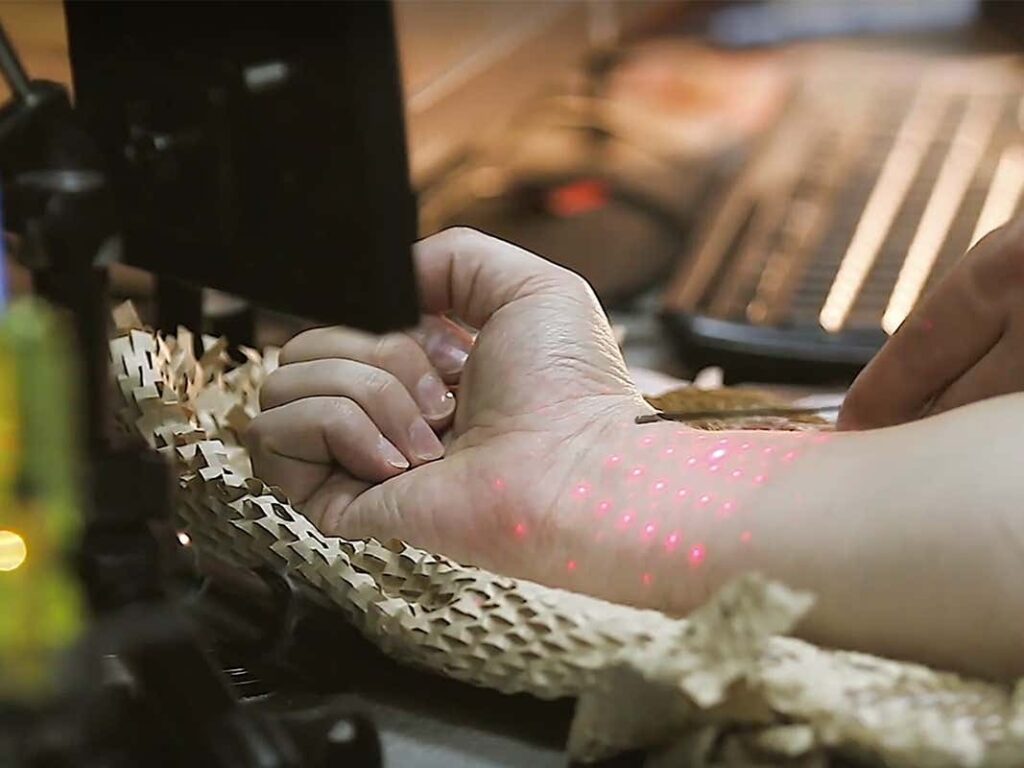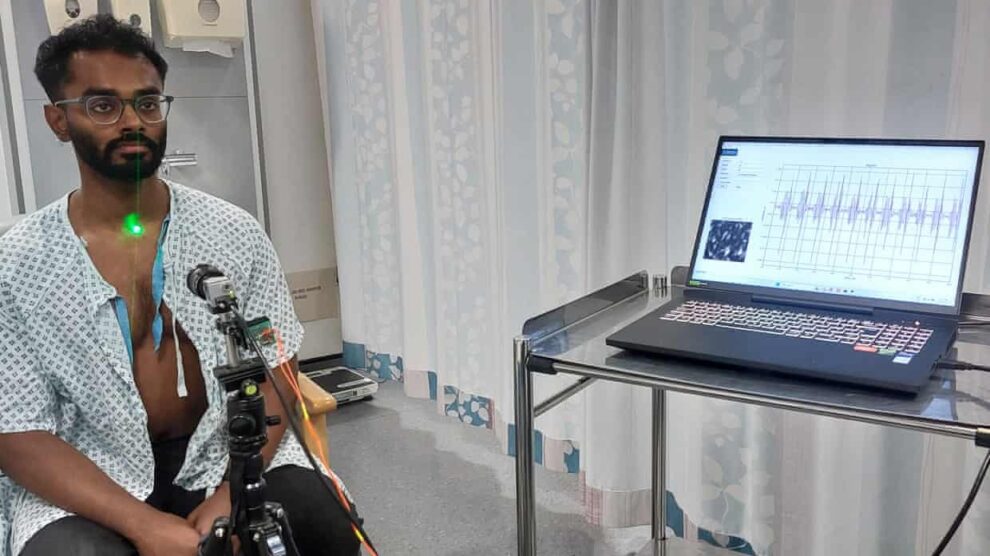An intriguing new technology developed by University of Glasgow scientists employs lasers to remotely sense heart rate via almost imperceptible skin vibrations in the throat. This laser vibrometry technique promises easier, more hygienic and potentially more accurate heart monitoring than conventional stethoscopes – possibly revolutionizing cardiac diagnostics.
Lasers Detect Heartbeat From Throat Movements
The laser-based system works by beaming low-power lasers at the thin skin overlaying a patient’s throat area. As the heart beats, micro-movements of vessels and tissues generate subtle skin displacements.
These minute vibrations slightly shift the laser light reflection angle – an effect picked up by high-resolution sensors. Advanced signal processing then extracts key cardiac signatures from these patterns, allowing heart rate and rhythm assessment without any skin contact.
Remote Measurement of Vital Signs
This technique enables reliable remote measurement of vital signs using harmless, invisible laser light without disturbing patients – opening up various medical and wellness applications.
It provides quick heart monitoring similar to conventional stethoscopes but without risks of skin irritation or infections from repeated auscultation sensor contact. Patients also avoid chest exposure discomfort particularly in public or cold environments.
Envisioning Wider Cardiac Screening Accessibility
Looking ahead, scientists envision this laser vibrometry system allowing individuals easily checking heart health indicators from home via connected devices for proactive care.
Already miniaturized prototypes integrate into smartphone-sized form factors. With more development, production costs may lower sufficiently to enable wearing as in smartwatches or rings for continuous monitoring.
Early Disease Identification
Made widely accessible, such technology can potentially catch cardiac conditions early through data insights unavailable via occasional check-ups. Patients also avoid anxiety associated with hospital visits for basic screening.
Democratized Cardiac Care
Likewise, automated evaluation algorithms analyzing results for medically relevant patterns may assist expanding cardiac services affordably across underserved communities lacking specialist access.
This prevents minor anomalies from escalating into life-threatening events – saving numerous lives.

Overcoming Adoption Challenges
However, realistically overhauling conventional diagnostics still requires addressing scalability, regulations, and physician trust in the laser approach on par with physical stethoscopes.
Manufacturing Logistics
Streamlining components for mass-production while preventing quality variations across devices will be essential for clinical-grade home use.
Medical Approvals
Navigating regulatory clearances may also challenge uninterrupted commercialization, albeit the technology poses no health risks.
Clinician Confidence
Getting physicians accustomed to adopting remote heart monitors for patient guidance constitutes another adoption hurdle, though software improvements and clinical validation studies promise helping.
The Future of Cardiac Care
At scale, easily available laser-based heart screening promises preventing millions of avoidable heart attacks yearly through early interventions. Such proactive models align with emerging preventative healthcare priorities worldwide.
While unlikely completely displacing trusted stethoscopes soon, this emerging technology nevertheless paves the way for democratized vital testing – allowing individuals actively safeguarding cardiac health regardless of geography or income. And that spells good news for global public health.










Add Comment